August 01, 2025
Kamakhya Temple: The Sacred Seat of Feminine Power in Assam
CM Content Team


View all
140+
Resorts
August 01, 2025
CM Content Team
The Kamakhya Temple in Guwahati, Assam, is one of the most revered and mysterious spiritual destinations in India. Dedicated to Goddess Kamakhya, it is not just a place of worship but a celebration of Shakti, the primal feminine force that represents power, fertility, and creation. Unlike traditional temples that house idol representations of deities, Kamakhya honours the divine in its purest and most symbolic form, focusing on the sacred yoni (womb). Rooted in tantric rituals, ancient myths, and centuries of devotion, the temple holds a unique place in the spiritual and cultural fabric of the country.
In this Blog you will learn
Conclusion:
The name "Kamakhya" is derived from Kama, meaning desire, and Akshya, meaning indestructible. According to Hindu mythology, the temple marks the spot where the yoni (womb and vagina) of Goddess Sati fell during the dismemberment of her body by Lord Vishnu’s Sudarshan Chakra. This act followed Sati’s self-immolation after her father, King Daksha, insulted her husband, Lord Shiva.
This mythological episode led to the creation of 51 Shakti Peethas across the Indian subcontinent, and Kamakhya is considered one of the most powerful among them. It is the only temple in India that celebrates menstruation as a symbol of womanhood and fertility, setting it apart in a society where such topics are often considered taboo.
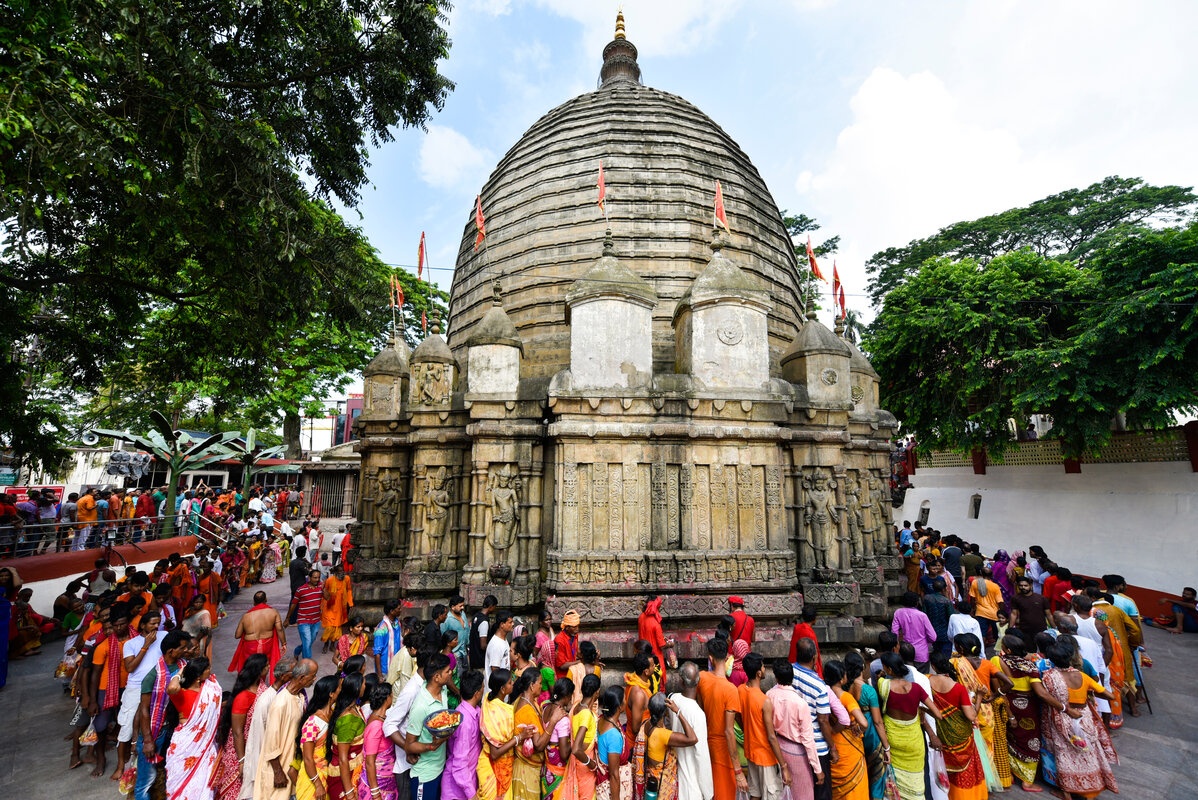
What makes Kamakhya Temple even more compelling is its absence of a deity idol. Instead, devotees worship a natural rock formation in the shape of a yoni, which is kept moist by an underground spring. This rock is draped in red silk and revered as the manifestation of Goddess Kamakhya.
This profound focus on the womb as a source of all creation positions Kamakhya as a temple not just of devotion but of cosmic energy. Here, divinity is not seen but felt, in the air, the rituals, and the spiritual resonance that echoes through its stone corridors.
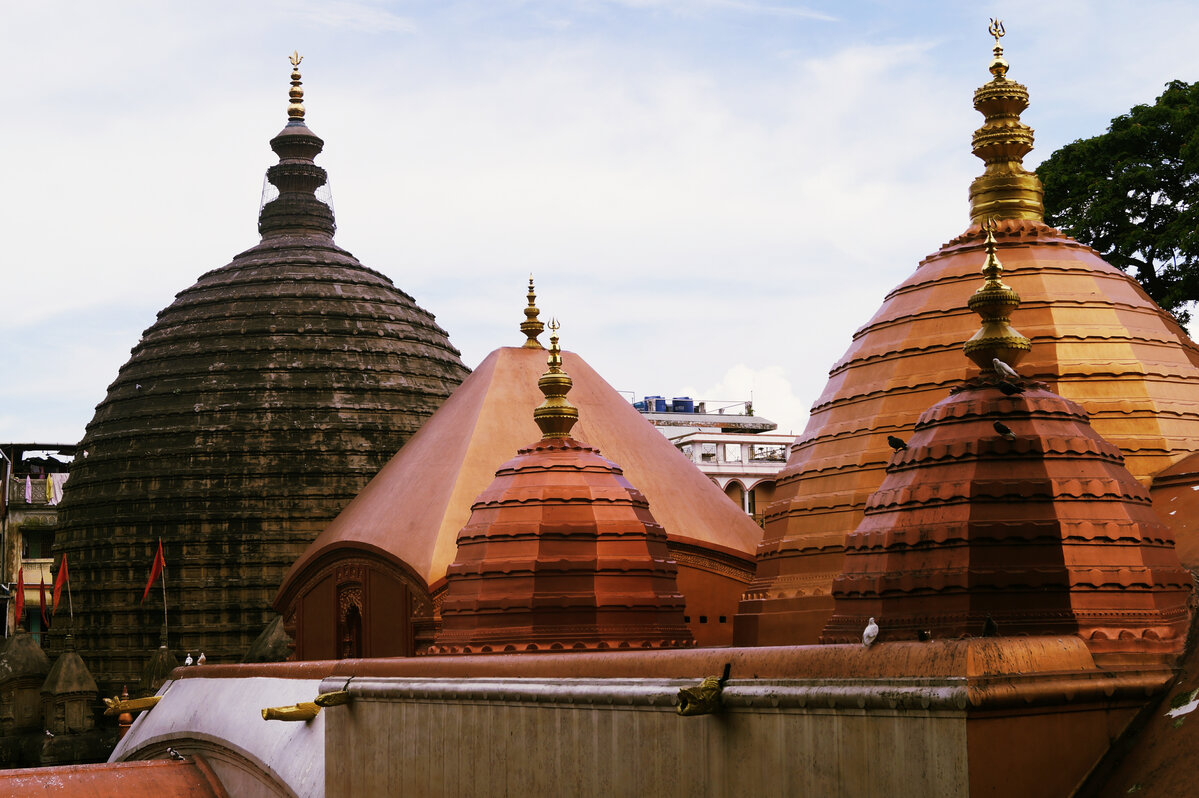
The Kamakhya Temple’s architecture is a fusion of indigenous and classical forms. It follows the Nilachal style, marked by a beehive-shaped shikhara (dome), sculptured panels, and curvilinear towers.
The current structure is believed to have been rebuilt in the 16th century by King Naranarayan of the Koch dynasty, after the original temple fell into ruins. The sanctum’s modest structure contrasts with the grandeur of North Indian temples, but its aesthetic and symbolic depth is unparalleled.
The temple complex also contains ten smaller temples, each dedicated to one of the ten Mahavidyas (aspects of the Goddess Durga), showcasing the diverse forms of feminine power, from the fearsome Kali to the benevolent Kamala.
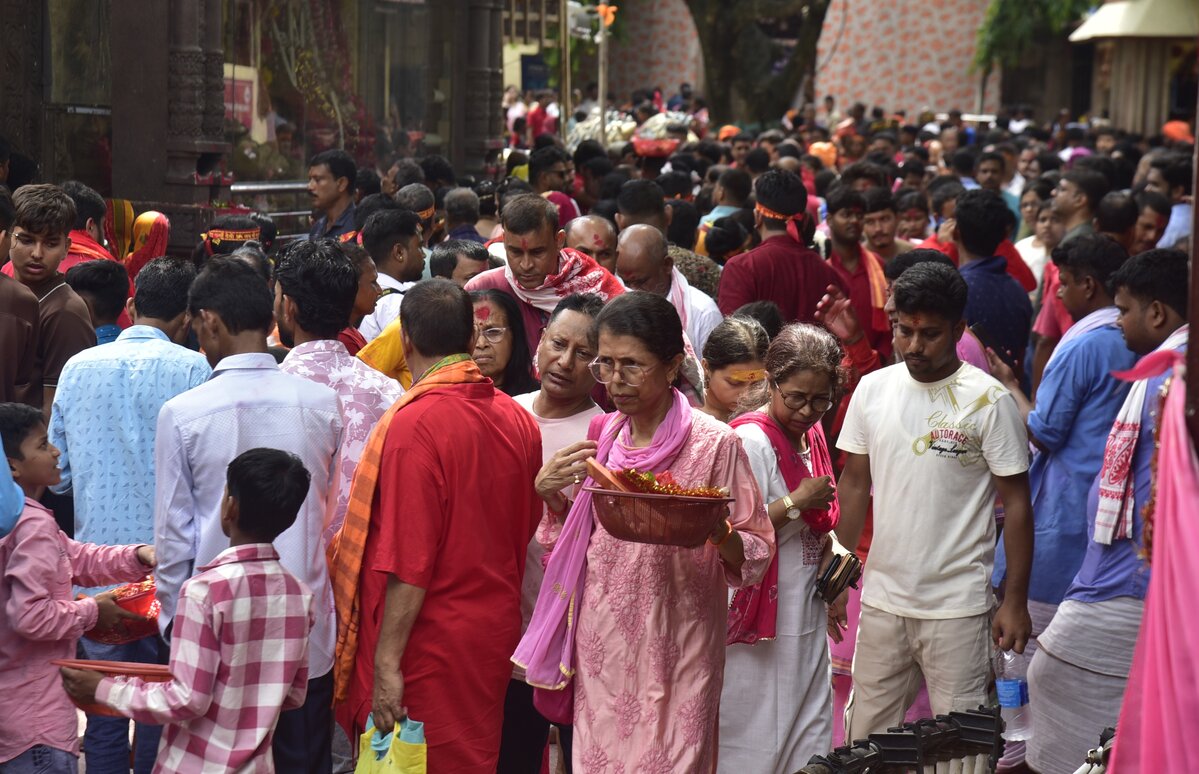
Perhaps the most famous event associated with Kamakhya is the Ambubachi Mela, held annually in June, during the monsoon season. The festival marks the menstrual cycle of Goddess Kamakhya, symbolizing her fertility.
For three days, the temple remains closed to worshippers, indicating that the goddess is undergoing her period. During this time, all agricultural activities are halted, symbolizing the Earth’s rest and rejuvenation. On the fourth day, the temple reopens with great fanfare, music, and spiritual ceremonies.
The Ambubachi Mela attracts millions of devotees, including sadhus, tantrics, pilgrims, and curious travellers, making it one of the most powerful spiritual congregations in India.

Kamakhya is a temple where tantra and traditional Hinduism converge. Unlike conventional temples that focus on rituals and offerings, the Kamakhya Temple is deeply rooted in tantric philosophy.
This ancient spiritual practice aims at liberation through cosmic union of masculine and feminine energies, often misunderstood as being purely esoteric or even taboo. However, at Kamakhya, tantra is practiced openly and respectfully, as a means to attain moksha (liberation) and self-realization.
The temple complex is known to be a seat of Tantric Siddhas, and during Ambubachi, you may even witness secretive rituals carried out by Aghori babas and Tantric practitioners, adding a layer of mystery and power to the atmosphere.
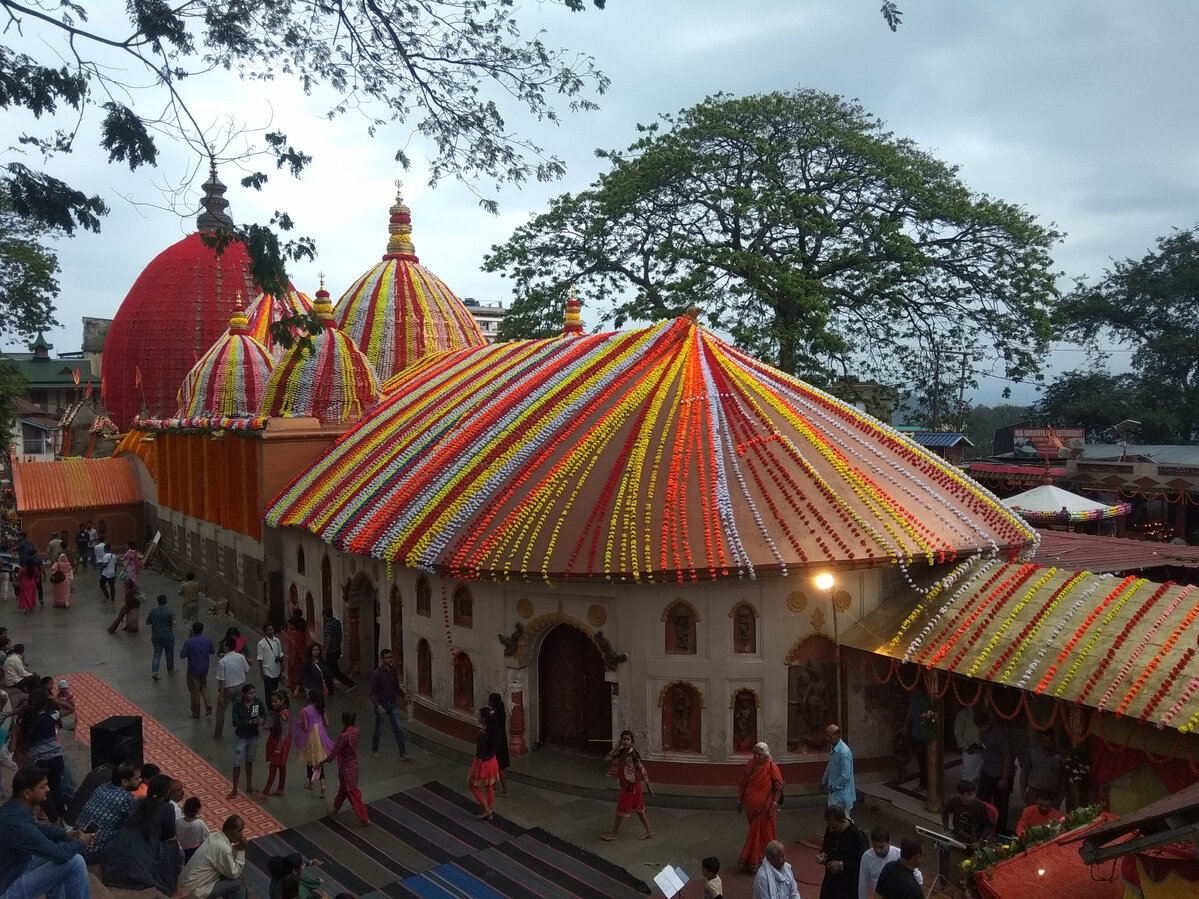
Located just 8 km from Guwahati Railway Station, the Kamakhya Temple is easily accessible by road and air, making it a major tourist attraction in Northeast India. From the hilltop, one gets a breathtaking panoramic view of the Brahmaputra River and the city below.
The temple is not only a site of devotion but also a beacon of culture, history, and ecology. Nearby, you can visit other attractions like the Umananda Temple, Assam State Zoo, and the bustling Fancy Bazaar, making a pilgrimage to Kamakhya also a cultural exploration.
Best Time to Visit: October to April for pleasant weather. June for Ambubachi Mela (but be prepared for monsoon crowds).
Apart from visiting the Kamakhya Temple, Assam offers a rich variety of experiences for travellers. From UNESCO World Heritage wildlife sanctuaries to cultural river islands and historic towns, the state is full of hidden gems waiting to be explored.
Here are few must-visit places in Assam beyond Kamakhya Temple:
Reaching the Kamakhya Temple in Guwahati, Assam, is convenient thanks to the city’s excellent connectivity by air, rail, and road. Here’s how you can get there:
By Air:
By Train:
By Road:
City Connections: Guwahati is well-connected by road to cities in Assam and nearby states.
From the gate, either walk uphill (15–20 minutes) or take a shared vehicle to the temple entrance.
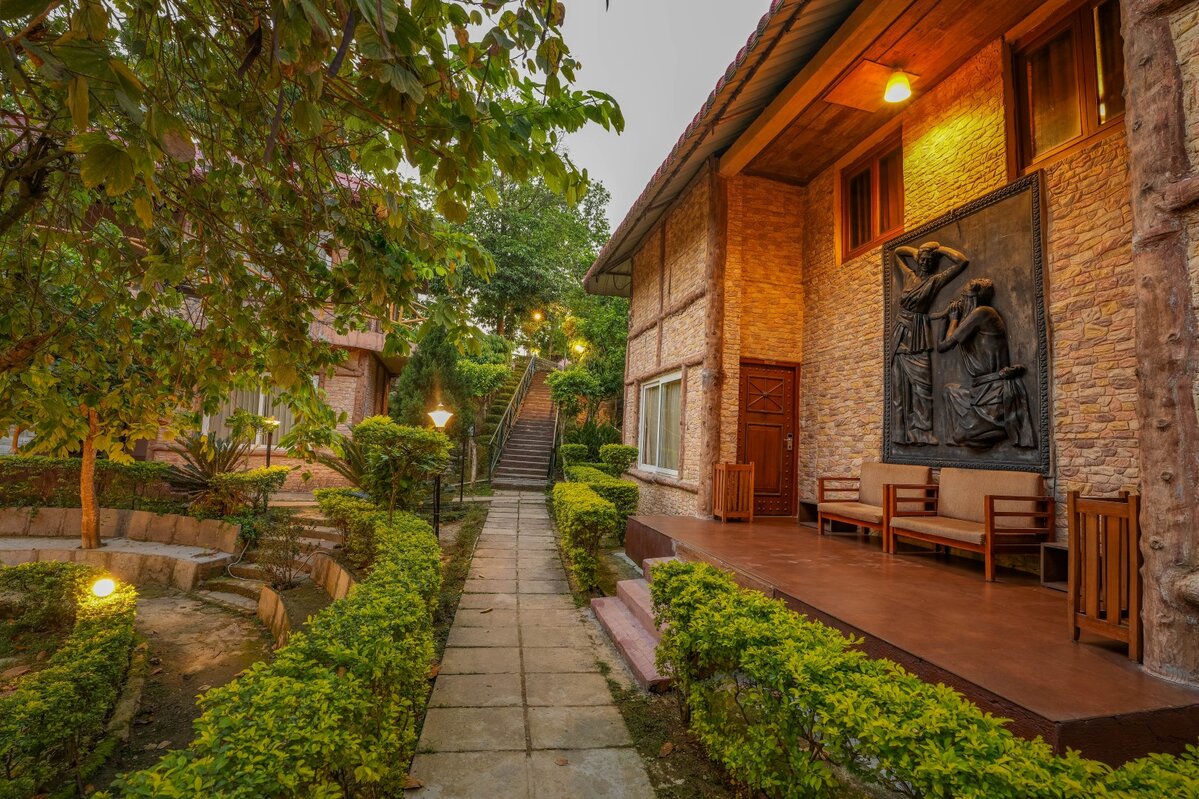
Nestled amidst serene tea gardens in Kaziranga, Summit Green Lake Tea Resort offers a peaceful and comfortable retreat in the heart of Assam. Just a few hours from Guwahati, this resort in Assam an ideal stay for those visiting Kaziranga National Park. The resort combines traditional Assamese charm with modern amenities. With scenic views, local cuisine, and nature all around, it’s perfect for relaxation and exploration alike.
Club Mahindra membership gives you access to over 140+ Club Mahindra resorts worldwide, offering diverse vacation experiences for the whole family. With easy booking options through their app and website, planning holidays is hassle-free. Members enjoy exclusive benefits, comfortable stays, and curated activities. It’s a smart choice for frequent travellers seeking value and variety.
The Kamakhya Temple is more than an architectural wonder or religious site, it is a celebration of the feminine principle that underlies all creation. By honouring the yoni, it reveres the power of motherhood, fertility, and cosmic creation, making it one of the most progressive and spiritually rich temples in the Hindu tradition.
In an age where divinity is often defined by visual idols and elaborate rituals, Kamakhya stands out for its raw, elemental spirituality. Here, divinity flows like the spring beneath the sacred rock, reminding us that the source of life itself is the most sacred form of worship.
For pilgrims, seekers, scholars, and curious travellers alike, a visit to Kamakhya is not just a journey across geography, it’s a journey inward, into the heart of Shakti, the soul of India, and perhaps, even your own.
Mahindra Holidays & Resorts India Ltd. (MHRIL), a part of Leisure and Hospitality sector of the Mahindra Group, offers quality family holidays primarily through vacation ownership memberships and brings to the industry values such as reliability, trust and customer satisfaction. Started in 1996, the company's flagship brand ‘Club Mahindra’, today has over 300,000 members , who can holiday at 140+ resorts in India and abroad.
We use cookies to personalise content and to provide you with an improved user experience.By Continuing to browse this site you consent to the use of cookies.Please visit our cookie policy for further details.

Welcome to ClubMahindra.com In order to provide a personalised experience for you, we use cookies to enable some website functionality. Cookies help us see which articles most interest you; allow you to easily share articles on social media channels; permit us to deliver content personalised to your interests and locations; along with many other site benefits. For more information, please review our Cookie Policy
When you visit any website, it may store or retrieve information on your browser, mostly in the form of cookies. This information might be about you, your preferences or your device and is mostly used to make the site work as you expect it to. The information does not usually directly identify you, but it can give you a more personalized web experience. Because we respect your right to privacy, you can choose not to allow some types of cookies. Click on the different category headings to find out more and change our default settings. However, blocking some types of cookies may impact your experience of the site and the services we are able to offer.
Because we respect your right to privacy, you can choose not to allow some types of cookies and you have the right to withdraw your consent by send a mail to email id [email protected]
These cookies are essential in order to enable you to move around the site and use its features, such as accessing secure areas of the site. Without these cookies, services you have asked for cannot be provided.
These cookies allow us to employ data analytics so we can measure and improve the performance of our site and provide more relevant content to you. These cookies don't collect information that identifies a visitor down to an individual level that is available to us. These cookies are not passing personally identifiable information to any external third party other than in limited cases when we engage a service provider to act on our behalf but who is then unable to use the data for their own purposes.
Performance cookies are generally third-party cookies from vendors we work with or who work on our behalf that collect information about your visit and use of the Club Mahindra website, for instance which pages you visit the most often, and if you get error messages from web pages. These cookies don't collect information that identifies a visitor. All information these cookies collect is anonymous and is only used to improve your overall experience on how the website works. Third party vendors may have access to this data and may use it to improve their overall services and offerings.
Functionality cookies allow a site to remember choices you make (such as your user name, language or the region you are in) and provide more enhanced, personal features. These cookies cannot track your browsing activity on other websites. They don't gather any information about you that could be used for advertising or remembering where you've been on the Internet outside our site.
Third-party advertising and social media cookies are used to (1) deliver advertisements more relevant to you and your interests; (2) limit the number of times you see an advertisement; (3) help measure the effectiveness of the advertising campaign; and (4) understand people's behaviour after they view an advertisement. They are usually placed on behalf of advertising networks with the site operator's permission. They remember that you have visited a site and quite often they will be linked to site functionality provided by the other organization. This may impact the content and messages you see on other websites you visit. If you do not allow these cookies you may not be able to use or see certain these sharing tools content on our website.